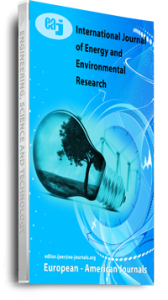The entire surface of the earth is visited by the birds in view of their aerial flights and variable habitats in search of suitable breeding and feeding grounds. Flight, intelligence, adaptability and sight are some of the attributes that add to the diversity in the life of birds, consequently there is complexity in their overall behavioral pattern. The key objective of this study was to assess the weaver-bird crop-raiding activity in Buea municipality on different environmental parameters. The study was undertaken for three months, six days in a week, from 7:00am to 6:00pm. Scan observations were made on birds’ activity on a five-minute interval period across the entire study area. Simultaneously, data was collected on the environmental conditions. The study recorded a significant association between weaver-bird activity on crop-land, X2 = 11.653 df=14, P < 0.005 and X2 = 3.441 df=4, P<0.05 respectively. There was weaver-bird activity frequency of 51.63%, 45.35%, and 3.02% for Ploceus luteolus, Ploceus cuculatus, and Ploceus melanocephalus respectively. Moreover, a week association between bird activity and weather, X2 = 3.125 df=3, P<0.05 was recorded. The sunny and cloudy weather conditions recorded 53.26%, and 42.09% respectively, while the windy and rainy weather conditions were significantly low (3.26%). An association was recored between atmospheric conditions and weaver-birds’ activity on crops, X2 = 23.249 df=21, P<0.05. In addition, the most destroyed farms were Elaeis guineensis (32.33%), Saccharum officinarum (19.77%), Zea mays (17.44%), and Mangifera indica (15.58%) respectively, and the scale of destruction was very prominent on the foliage used by the birds for nest-building. Maize crops and oil-palms were among the crop species most subjected to destruction by birds. These crops were observed with poor foliage formation and fruits, consequently they withered, and since the local farming population in this municipality predominantly cultivate these crops most, a heavy toll is often taken on the annual farmers’ income.
Keywords: Environmental conditions, Feeding, crops, nesting, weaver-bird

